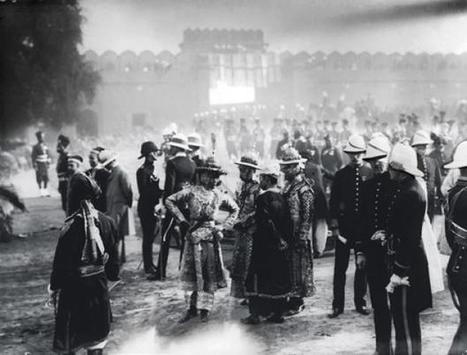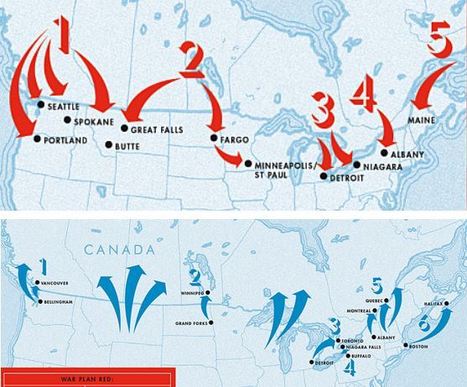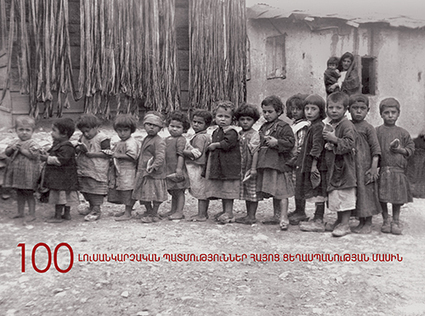The British Empire was the largest Empire to have ever existed in our history. So what would things look like if the empire reunited today?
Get Started for FREE
Sign up with Facebook Sign up with X
I don't have a Facebook or a X account
 Your new post is loading... Your new post is loading...
 Your new post is loading... Your new post is loading...
Matthew Richmond's curator insight,
November 23, 2015 2:24 PM
Turkey has always been a country that I find interesting. So many amazing architectural structures and landscapes. I have two friends from high school who work there in the peace corps. I asked them what it's like and they couldn't really describe it. They said it isn't really Arabic but it certainly isn't western either. This was a good introductory video on the area.
Katie Kershaw's curator insight,
March 30, 2018 11:23 AM
This video is helpful in understanding the factors that have made Turkey what it is today. Their physical location has impacted much of their history, as they have been centrally located around various empires for centuries. Turkey is complex because it doesn’t fit the mold of being a solely Middle Eastern country or a solely European country, it has elements of both regions. Up until World War I, Turkey leaned more towards being an Islamic, more traditionally Middle Eastern country. However at this point they adapted many European ways in order to retain their power as an empire. Another point about Turkey is that the area that they are confined to now has only been so for about a century. However, the Turks as a group of people have a very long and rich history. Turkey is one of those countries that is difficult to fully understand or categorize because it is a multitude of cultures. This is presenting a problem currently in Turkey as their government is being challenged. It is yet to be seen whether the Turkish people want a more democratic style of government like that of European countries or a more authoritarian government like their Middle Eastern neighbors. Since they are a combination of both areas culturally, it is hard to tell which system they will pick.

Padriag John-David Mahoney's curator insight,
April 28, 2015 6:18 PM
I have often thought about this. The Armenian genocide was the first genocide of the 20th century, but was largely forgotten. Very few- VERY FEW- American students learn about it before college or high school. What do we learn about? The only genocide I remember being taught in school was the Holocaust- the Jewish Genocide at the hands of Nazi Germany. But there was also the genocide and apartheid in Rwanda and the Khmer Rouge in Cambodia. My father taught me all about all of these genocides. There is a statue outside Auschwitz concentration camp with the inscription "Never Again". But what have the many organizations done to prevent or reveal such atrocities? I don't see the Shoah foundation standing up for the Armenians now, or the victims of the Cambodian or Rwandan genocides. I believe the inscription on that statue truly means ''Never again.........to the Jews''

Kevin Nguyen's curator insight,
December 7, 2015 2:33 PM
The Rise and Fall of the Ottoman Empire can be clearly seen at the beginning and the end. They had a massive territory expansion at 1300 and it bloomed from there. from then to 1900 then only had some minor changes with some changes in territory. At the end, in 1900s was the most significant change with the Empire collapsing with the Republic of Turkey being established in 1923.
Nicholas A. Whitmore's curator insight,
December 13, 2015 3:39 PM
A fascinating look into the shifting nature of borders through history. Unfortunately it also reflects many atrocities that also occurred in those years. Geographically the Empire wouldn't last given its difficult to defend borders. Additionally its extremely conservative Political and Cultural nature made it nearly impossible for it to adapt to changing times in technology. Which is ironic in a way because it was their innovation that sparked the Empire and the seizure of Constantinople to begin with. Also it should perhaps be mentioned that the current nation of Turkeys borders are an unnatural creation on the part of the Turks when they were aware their Empire would collapse. This unfortunately also means this map hides events such as the Armenian Genocide to try and purify Anatolia so that the Turks could claim it as its sole homeland while abandoning the rest of the Empire (so in effect they consolidated to try and keep as much land as possible). 
Richard Aitchison's curator insight,
March 7, 2018 11:08 AM
This is a very simple GIF map, but one that we can look at using other outside materials and really used to our advantage of seeing the every changing Middle Eastern Area. The Rise and Fall of the Ottoman empire is a key geographical and political fallout from the 1300's until what is now present day Turkey. When you examine the map and see how big the Empire eventually got and what lands it covers we can use this map to interpret some current conflicts like the one in Syria. Also nowadays we do not think of Turkey as a world power or even a regional power. However, it shows there past history as a world power and that can drive a country (see Russia) to wanting to regain that power. Will Turkey look to regain that power as well? What could they possibly to do to regain this power and how would that effect other Middle Eastern countries. We also can look at the map and realize that the region probably contains many people of Turkish acenstory and what effect does that have on political polices in certain countries that had previously been under the power of the Ottoman Empire.
Mark Hathaway's curator insight,
November 10, 2015 6:19 AM
Why do Indians love Cricket? As with most modern day countries, colonialism has something to do with it. However, the British never intended to promote Cricket in India. It was the local elite of India that first pushed to incorporate the game into Indian culture. Desperate to gain the prestige that the British attached to the game, the elite began the practice of playing Cricket in India. In the years following independence, the game has spread to the other classes of Indian society. The game has become the national pastime for the nation.
Benjamin Jackson's curator insight,
December 14, 2015 11:52 AM
this is an interesting reason for a game to spread. it was a game played by the elite, so it never really lost the appeal of being a sport of the rich.

Martin Kemp's curator insight,
December 17, 2015 3:30 PM
i have tried to watch a cricket match before but it seemed so odd, i dont really fully understand the game but the people playing (especially inians) were playing more than a game, for them it seemed like they were playing for their country and it was a great honor to them. unlike a sport like soccer where people play for other countries teams. |

Kent College History's curator insight,
January 13, 2017 1:03 PM
'The British empire has receded into history. Yet despite its difficult legacy, says Tristram Hunt, the cities that the empire helped forge are fast becoming the economic powerhouses of the 21st century...'

Alex Vielman's curator insight,
September 20, 2015 10:25 PM
It's very interesting to see how neighbor countries don't really get along as to how one thinks they would. Who would of thought Canada actually had plans to invade the U.S.? Isn't it a good thing to have your allies like best friends? Canada had this plan during the 1920s and had 5 intrusion entries. its interesting to see how one of the intrusion points would of been Seattle. In my opinion, this could of been a really bad for both countries. Overall, now I would like to know how 'well' the relationship is between the two countries.
tyrone perry's curator insight,
January 25, 2018 7:31 PM
Both the U.S. and Canada had a similar thought process with the "just in case" clause if either of the two became enemies. both countries had their "scouts" look of the geography of each country and speak to locals to see where they stood, to find precise locations where they could attack and control. Each location had plans to destroy infrastructures and bridges to allow time to either escape or control depending on how the situation played out. It was both crazy and smart by the two nations to do their research with in their perspective locations to validate their attacks.

Kelvis Hernandez's curator insight,
September 29, 2018 8:15 PM
"Can I copy your homework?" "Sure just change it a little so it doesn't look obvious." After the first world war, Britain ended up owing the United States approximately $22 million leading to huge disagreements over payment. As such in a sibling-style rivalry, Canada and the United States both drafted invasion plans which were almost identical. While Canada would send forces down to attack Seattle, Portland, Minneapolis, Detroit, and Albany among others, the US would send troop north from the same cities to take Vancouver, Winnipeg, Quebec, and Montreal. It seems like it would be totally impossible now with Canada and US being such powerful allies but with the growing tensions between Trump and Trudeau who knows what could happen. If you are questioning who would win though? I would I would put my money on the 46-year-old Justin Trudeau being able to trump the 72-year-old Donald Trump.

Maricarmen Husson's curator insight,
April 17, 2015 7:37 PM
A 100 AÑOS DEL GENOCIDIO ARMENIO Cada año el 24 de abril, día de la conmemoración del Genocidio, nosotros los armenios recordamos la injusticia de un crimen que rara vez se reconoció y a menudo negó rotundamente. Era el 24 de abril de 1915, cuando los intelectuales armenios, profesionales, editores y líderes religiosos de Constantinopla fueron detenidos por las autoridades otomanas - y casi todos ellos ejecutados. Durante la Primera Guerra Mundial, el Imperio Otomano mató a tres de cada cuatro de sus ciudadanos armenios. La mayoría de los armenios vivos hoy son descendientes de los pocos sobrevivientes ". 
Kristin Mandsager San Bento's curator insight,
May 1, 2015 4:17 PM
I have to be honest, I never knew we had a Genocide Remembrance Day. As I get older, there seems to be a day for everything. This is a horrific act. Unfortunately, as we've seen historically many countries have tried this. There is never a good outcome. It's atrocious that we could ever standby and not do something. 
Eden Eaves's curator insight,
May 24, 2015 6:24 PM
Unit 3 For most of the world, the Armenian Genocide is the slaughter we know almost nothing about. But every year on April 24,Genocide Remembrance Day, Armenians all over the world remember the injustice of a crime that is rarely acknowledged and often flatly denied. It was April 24, 1915, when the Armenian intellectuals, professionals, editors and religious leaders in Constantinople were rounded up by the Ottoman authorities — and almost all of them executed. During World War I, the Ottoman Empire killed three of every four of its Armenian citizens. The majority of Armenians alive today are descendants of the few survivors
Mark Hathaway's curator insight,
November 10, 2015 6:19 AM
Why do Indians love Cricket? As with most modern day countries, colonialism has something to do with it. However, the British never intended to promote Cricket in India. It was the local elite of India that first pushed to incorporate the game into Indian culture. Desperate to gain the prestige that the British attached to the game, the elite began the practice of playing Cricket in India. In the years following independence, the game has spread to the other classes of Indian society. The game has become the national pastime for the nation.
Benjamin Jackson's curator insight,
December 14, 2015 11:52 AM
this is an interesting reason for a game to spread. it was a game played by the elite, so it never really lost the appeal of being a sport of the rich.

Martin Kemp's curator insight,
December 17, 2015 3:30 PM
i have tried to watch a cricket match before but it seemed so odd, i dont really fully understand the game but the people playing (especially inians) were playing more than a game, for them it seemed like they were playing for their country and it was a great honor to them. unlike a sport like soccer where people play for other countries teams. |
















